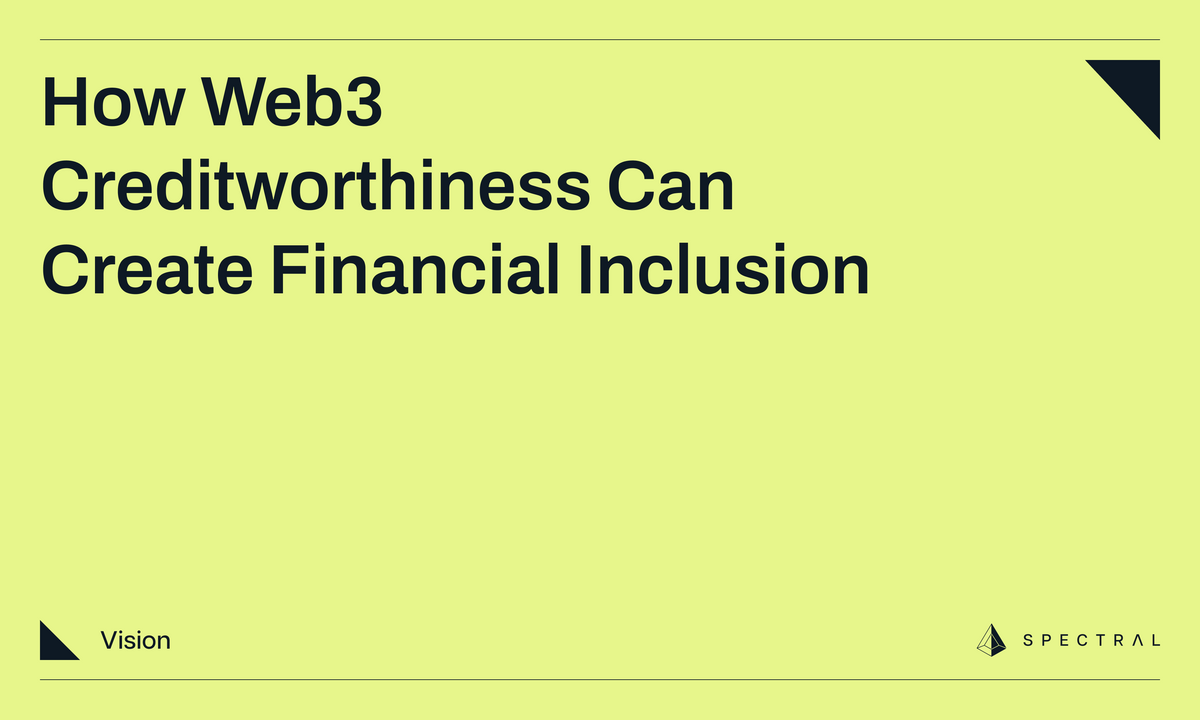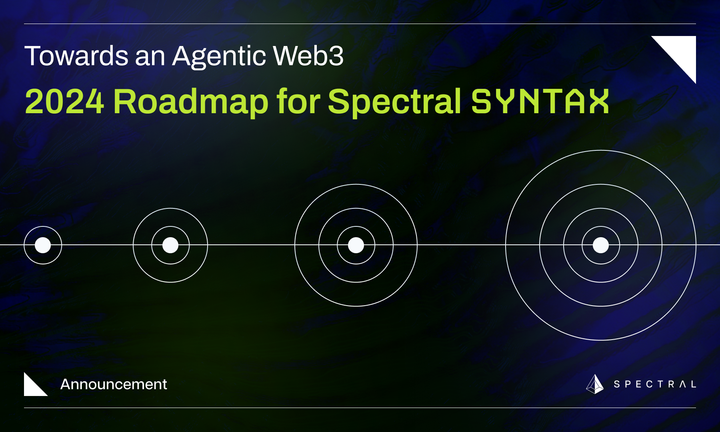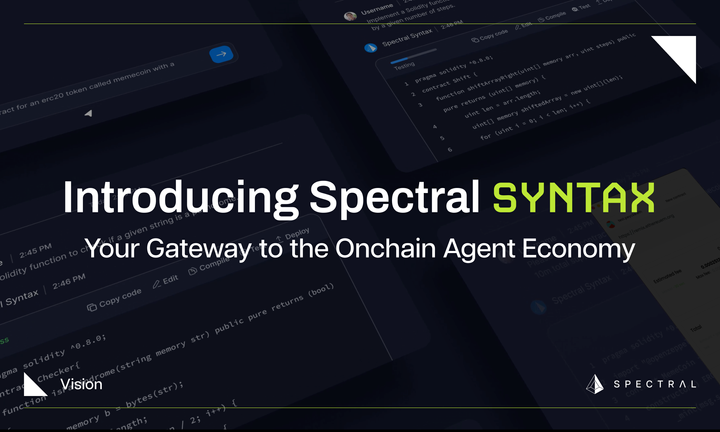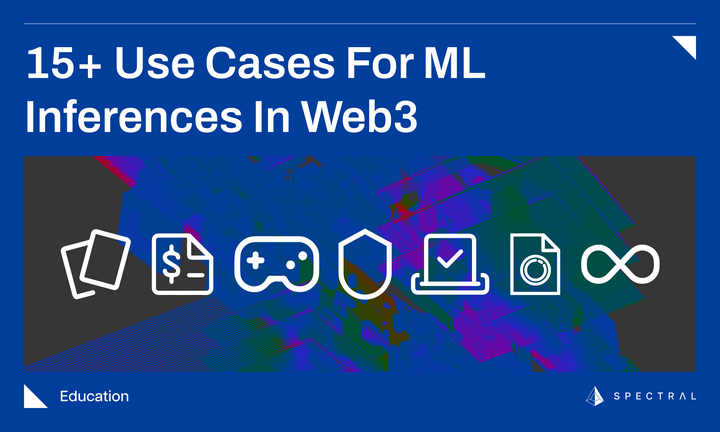How Web3 Creditworthiness Can Create Financial Inclusion
One theme that may come as a surprise is the close connection between financial inclusion and credit assessment. DeFi offers an unprecedented opportunity to further expand access and accessibility to credit by developing risk assessment infrastructure.

Fair creditworthiness assessment means economic opportunity
One theme that may come as a surprise is the close connection between financial inclusion and credit assessment. Consumer credit created an explosion of opportunity and, by revealing why people really defaulted on debt, put an end to debtors' prisons and multigenerational debt.
Decentralized Finance (DeFi) offers an opportunity to further expand access and accessibility to credit by developing risk assessment infrastructure. Our vision is to build Web3’s financial reputation layer. Blockchain technologies allow us to prise power away from traditional finance. But without holding ourselves to higher standards than the existing global financial system, what difference would it make?
Power should be decentralized: we are building a decentralized network of machine learning models that will begin quantifying credit risk without hoarding data or relinquishing control to a centralized authority. Decision-making must be credibly neutral. Blockchain technologies can bring an end to backroom deals and inequality. Whether this means granting a mortgage, a credit card, or any other financial decision, anyone should be able to understand why a decision was made.
Here’s how we get there.
Privacy is important for individuals and organizations alike
Before the advent of credit intelligence and scoring, consumer default was considered a malevolent act and often punished as a crime. The recent crackdowns on Tornado Cash and other forms of privacy are a step backward in our opinion. We fear the combination of Know Your Customer (KYC) rules, on-chain information, and the secrecy of traditional credit bureaux could spark the creation of China-style social credit monitoring. We believe financial inclusion must include privacy, for individuals and organizations.
For financial organizations, privacy is crucial; particularly on the blockchain where transactions are visible and strategies could be automatically forked or prodded at. As DeFi envelops more and more corporate functions, the need for privacy increases. Few organizations would appreciate intense scrutiny directed at their compensation, for example, or their accounts payable and receivable. Finance is also an intimate act for individuals, particularly on a public blockchain where all transactions are visible at all times.
The MACRO Score is designed to be opt-in. Users generate their own Scores when needed by themselves and decide who can view them. No central authority is issuing them. What’s more, our process is designed to be completely transparent: the data going in is publicly available and the scoring mechanism—which will progressively be powered by a decentralized network of machine learning models—will be accessible to all qualified users.
The Spectral App (V0.3.0) recently launched in open beta and this experimental proof of concept already received a great reception from our community. As we continue to scale, we will bring as much disintermediation, decentralization, and autonomy as possible to on-chain credit scoring, in addition to adding new features and improving speed and accuracy. The Spectral team is looking at ways of incorporating zero-knowledge proofs and computing to conceal transactions from prying eyes. Bundling will always provide an option for privacy—and even the public version can offer a layer of pseudonymity by switching master wallets.
Ensuring Access and Accessibility in our Web3 products
On-chain Credit Scoring is our core competency. The MACRO Score represents our assessment of a user’s on-chain creditworthiness, and–by being represented as an ERC721 (a non-fungible credit token or NFC) it can function as a financial reputation primitive. We designed the MACRO Score to be composable, accessible, and to provide access to the broader financial community.
Familiarity was one component. Designed to assess a user’s risk profile, the MACRO Score is generated by analyzing a wallet’s on-chain activity and using our machine learning models to generate a Score assessing the wallet’s likelihood of being liquidated. The MACRO Score is represented by a number between 300–850 with the former representing a high risk of liquidation, and the latter a very low risk. The number should be familiar to most North American credit users in that resembles the Fair Isaac Company (FICO) score.
Composability is another component. Traditional finance is dominated by enormous institutions with little accountability for individual users. Try complaining to the SWIFT payment network, for example. All of our engineering and data is designed to be as transparent and composable as possible so anyone can monitor and create on our networks. We are excited to see the innovation that will come from “the wild” as Web3’s builders and innovators begin building around our infrastructure.
Access is built into the MACRO Score in other ways. As an alternative to a traditional credit score, the MACRO Score provides a method of proving creditworthiness that takes into account alternative assets such as NFTs, token holdings, and on-chain behavior. Creating an ERC721 on demand also disintermediates a user’s credit score, as the MACRO Score is generated from publicly available information and is entirely opt-in. Being an NFC also allows users to bundle wallets, creating opportunities for new financial instruments and community-driven financial decision-making.
Coops on demand: how bundling helps developers and online communities alike
Most of our community is interested in the financial benefits of the MACRO Score. Our community discourse often focuses on MACRO Scores gating access to undercollateralized loans, for example, or a forthcoming plan to create a liquidity pool for developers to experiment with. There are other uses for the NFC, however, many of which can solve some seemingly intractable problems.
The NFC is a composable primitive and can be used to “bundle” several wallets together to create a combined MACRO Score. In our current, experimental version, we can only integrate around a single wallet at a time, but by integrating multisig wallets such as Gnosis, groups of wallet-owners–such as DAOs or investment clubs—will eventually be able to combine their resources to access larger borrowing pools. It’s easy to imagine collective housing DAOs using a decentralized rating system powered by Spectral for a mortgage to build homes or cooperative businesses. The real innovation enabled by Web3 lies in collective identity and community. We can’t wait to see what communities and organizations can build with our networks.
Proof of Identity is another quality that NFCs can provide. As non-transferrable financial reputation primitives bound to a wallet or wallets, NFCs can also function as Soulbound Tokens (SBTs), guaranteeing credentials for gaming guilds, DAOs, corporations, and a myriad other uses.
Programmability leads to innovation and accessibility
The open-source movement was a key component of the digital revolution. Before companies like Google and Linux opened their codebases to the world, licensing software was extremely expensive and experimentation was limited to major labs and the most well-funded startups.
At Spectral we strive to make our models and APIs as open as possible to the widest array of users and developers. There is enormous untapped potential in DeFi, after all its chief selling point is its composability. Everyone should have access to public goods, including their creditworthiness.
If you are as excited as we are by the opportunities presented by DeFi, and are interested in receiving early access to our APIs or smart contracts, please reach out to us on our Discord server’s #integrations channel or fill out the following form.




